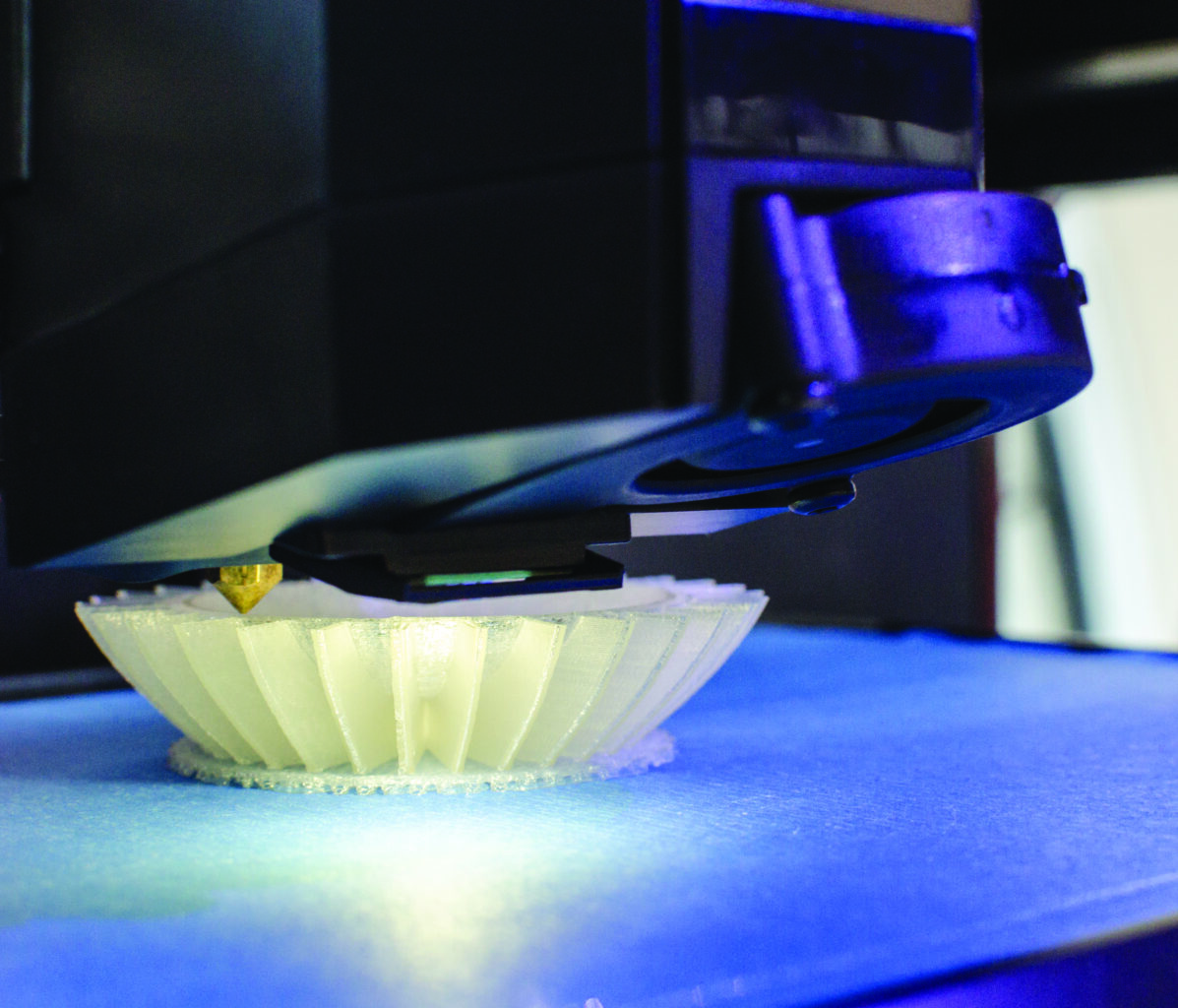Industrial innovation after COVID-19: four points to support AM’s long-term growth

The beginning of the Covid-19 crisis posed a challenge to the usual production and distribution channels for medical devices. Due to the scale of the demand, the conventional suppliers of this essential equipment were unable to provide immediate solutions to hospitals.
Amid this significant disruption in the supply chain, the additive manufacturing (AM) community stepped up and helped cover this surplus demand, providing access to equipment as well as other services. With speed being one of the top priorities for hospitals waiting for supplies, the AM industry has shown to be uniquely positioned to quickly produce personal protective and medical equipment, such as ventilators.
In phase two of the fight against the COVID-19 crisis, the AM sector could continue to play a significant role in covering the high demand for personal protective equipment and tests. In particular:
- The production of swabs can be easily upgraded with the use of 3D printers, allowing in certain cases the output of up to 5000 swabs per day.
- Development of new solutions to avoid the spread of the virus (production of face shields, mask adapters, hands-free door openers etc.
CECIMO wishes to highlight the importance to implement at least some of the measures proposed in the document 'Recommendations to policymakers', such as enabling a quicker and easier access to the market of new essential medical and protection equipment by providing temporary access to certification.
However, this crisis is not only showcasing how AM can contribute in solving supply chain gaps during COVID-19, it also allowed to open discussions about key elements for the sector's future growth:
1) The need for dedicated AM standards and certification
Standards play a fundamental role in stimulating innovation and business development. However, this crisis called attention to the lack of standards and certifications currently available in this sector.
During its call to action, CECIMO received a high number of questions from both companies and policymakers concerning materials, quality control and operating procedures during emergencies and the need for accelerating the certification processes.
It is essential to fast-track the development of standards and certification procedures to enable the use of AM in different areas and consequently allow the entire sector to expand. We are convinced that this is an opportunity to accelerate industry collaboration and engagement in the development of AM standards.
CECIMO continues to engage with its network to foster Industry collaboration and partnerships and promote discussions that could lead to the establishment of clear standards (e.g. our network contributed to the launch of the ISO TC261 and the ASTM F42 joint group: ISO/TC 261/JG 78 - Safety regarding AM machines).
2) Importance of rethinking conventional supply chain
The recent supply chain disruptions in the medical industry should raise the awareness of other critical sectors, such as energy, on the importance of a flexible supply chain and build domestic capacity to prevent the risk of interruptions.
It is essential to support companies that wish to implement changes in their supply chain by investing in the deployment of new solutions, that could help building a more resilient industry in Europe.
AM can provide on-demand solutions, allowing an easier substitution of parts as well as on-site production of critical items.
Furthermore, AM is an appropriate choice for low volume production in many sectors, thanks to its ability to fabricate with low setup times and costs and the possibility to eliminate work in progress inventories, while maintaining a high degree of supply chain responsiveness.
Following the recent statement of President Ursula Von der Leyen, CECIMO calls for allocation of EU funding to promote innovative solutions, such as AM, which could support Europe in achieving a strategic autonomy in the construction of critical goods.
3) Regulations should focus on unleashing technology's potential
The emergency has put the whole sector under the spotlight. AM has been on the legislative radar of the European institutions long before the COVID-19 outbreak. However, the focus was often directed on how to regulate specific issues and not on how to best exploit opportunities linked to the use of AM (e.g. enabling more localized and on-demand manufacturing) that would bring Europe among the market leaders in this sector.
It is necessary to look at how AM can complement conventional manufacturing in the B2B environment and contribute to make critical sectors such as energy, construction, medical and aerospace more efficient and sustainable.
CECIMO believes that the recently launched EU industry strategy could boost the integration of AM in more sectors, ensuring a more resilient and competitive manufacturing industry in Europe.
For these reasons, the CECIMO network is committed to promote the benefits of AM with policymakers and relevant stakeholders, to advocate for the inclusion of the sector in the implementation of the industry strategy.
4) Lack of skilled workforce can slow-down AM growth
The lack of skills in AM remains one of the biggest challenges for our sector's potential. To mention one example, the quick adoption of AM solutions in hospitals will result in an immediate demand of new specialized workforce.
It is, therefore, essential to expand the pool of European workers who are able to work with the full process from design to final parts in different sectors.
Many current initiatives and projects aim to tackle the skills shortage by answering the industry's demand for personnel rather than planning how to develop the needed competencies among workers.
CECIMO takes part in the European project SAM (Sector Skills Strategy in Additive Manufacturing) which, building on the results of the METALS project (MachinE Tool Alliance for Skills), attempts to solve this specific issue by analyzing the current trends and identifying the skills that are needed today and will potentially be required in the future. These activities will enable the SAM project partners to anticipate future skills needs and redesign professional profiles according to the industry's skills needs, among other things.
